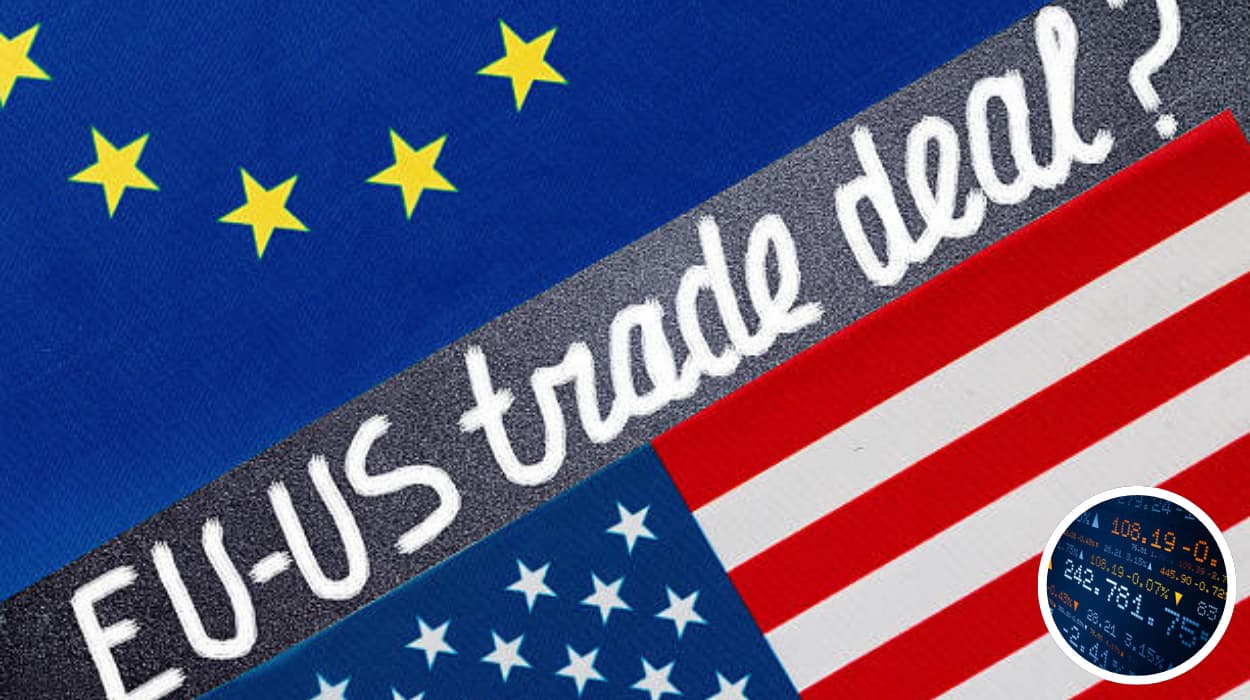Summary
- Investors are increasingly focusing on a potential trade deal between the United States and Europe as a critical deadline approaches.
- The agreement aims to reduce tariffs and trade barriers, fostering smoother transatlantic commerce.
- Discussions involve complex negotiations touching on industrial tariffs, regulatory alignment, and geopolitical considerations.
- Financial markets are reacting cautiously but optimistically, anticipating the deal could positively impact sectors such as manufacturing, technology, and agriculture.
- Stakeholders including government officials, business leaders, and trade experts emphasize the significance of this deal amidst current global economic uncertainties.
- Media coverage highlights diverging views on the likelihood and potential scope of the agreement.
It is essential to understand the broader implications of the US-Europe trade deal negotiations as the deadline approaches. This potential agreement stands to significantly influence global trade dynamics by reducing barriers and harmonizing regulations between two of the world’s largest economies. Investors and stakeholders remain vigilant, weighing the benefits of increased market access and economic cooperation against the challenges posed by regulatory differences and geopolitical factors. The outcome will not only affect transatlantic commerce but could also set a precedent for future trade agreements in an increasingly complex global economic landscape.
What Is the Status of the US-Europe Trade Deal Negotiations?
As the deadline for the potential United States-Europe trade deal nears, investors have turned their attention to the unfolding negotiations that promise to reshape trade frameworks across the Atlantic. Industry insiders and analysts report ongoing discussions seeking to lower tariffs, reduce regulatory hurdles, and enhance bilateral trade relations between the two economic giants.
According to sources close to the talks, both parties are intensely engaged in finding common ground, particularly concerning tariffs on industrial goods and technology products, as well as standards alignment. However, the complexities of harmonizing diverse regulatory regimes and addressing geopolitical tensions pose significant challenges.
Media reports emphasize that while progress has been made, a definitive agreement is not yet secured, leaving investors in a state of watchful anticipation.
Why Are Investors Interested in This Trade Deal?
Financial markets view the prospective trade deal as a potential catalyst for positive economic impacts. As reported by trade analysts, sectors such as manufacturing, agriculture, and technology stand to benefit substantially from reduced tariffs and streamlined customs processes. The enhancement of transatlantic supply chains could drive growth and profitability for multinational corporations operating in both regions.
Investors’ interest is heightened by the promise of increased certainty and stability in trade relations, which could mitigate risks associated with tariffs and protectionist policies currently swirling in global markets. However, with the deadline looming, there is also caution; the deal's success or failure may cause volatility in related equities and commodities.
Who Are the Key Players Involved in the Negotiations?
The negotiation teams include senior US trade officials and their European Union counterparts, alongside representatives from member states and industry lobby groups. High-profile figures such as the US Trade Representative and the EU Commissioner for Trade have been publicly involved in steering the talks.
Business leaders from major corporations on both sides have also voiced their hopes for a deal, underlining the commercial advantages of reduced trade barriers. According to industry groups quoted in the press, a successful agreement would provide significant relief amid ongoing post-pandemic economic recovery pressures.
What Are the Major Challenges Facing the Trade Deal?
Reports underline several sticking points that complicate reaching a final agreement. These include:
- Disagreements over tariff rates on specific goods, including steel, aluminum, and digital services.
- Regulatory divergence, where each side maintains different standards for product safety, data privacy, and environmental protections.
- Geopolitical concerns, particularly relating to trade practices with third-party countries and divergence in foreign policy stances.
- Domestic political pressures within both the US and European countries that influence negotiators’ flexibility.
While negotiators remain hopeful, these factors have contributed to a guarded outlook among investors and commentators.
How Are Markets Reacting to the Trade Deal News?
Financial market responses have been measured, with stocks in trade-sensitive sectors showing modest gains amid optimism. Commodity prices, particularly for materials like steel and agriculture inputs, have also reflected potential demand stabilization if the deal proceeds.
However, several analysts caution that uncertainty persists until formal confirmation of the agreement. Market volatility could increase as the deadline approaches, with investors weighing risks of a breakdown in talks against the upside of a successful pact.
What Could Be the Broader Economic Impact If the Deal Is Finalized?
Economic commentators suggest that a US-Europe trade deal would have multiple positive effects, including:
- Boosting bilateral trade volumes by cutting tariffs and duties.
- Encouraging investment flows between the US and Europe.
- Serving as a blueprint for other multilateral trade initiatives amid a fracturing global trade environment.
- Enhancing cooperation on digital economy regulations, climate standards, and intellectual property protection.
Such a pact would not only impact large corporations but also small and medium enterprises involved in cross-border trade.
What Do Experts Say About the Deal’s Prospects?
Trade experts quoted in recent articles express cautious optimism. According to media outlets,
"While political and regulatory hurdles remain, the mutual economic incentives for both sides make a deal achievable if compromises are made."
Conversely, some analysts warn that unforeseen political developments or external shocks could derail the talks at the last moment, underscoring the need for ongoing monitoring.

